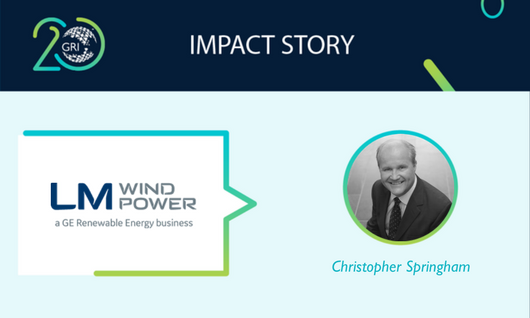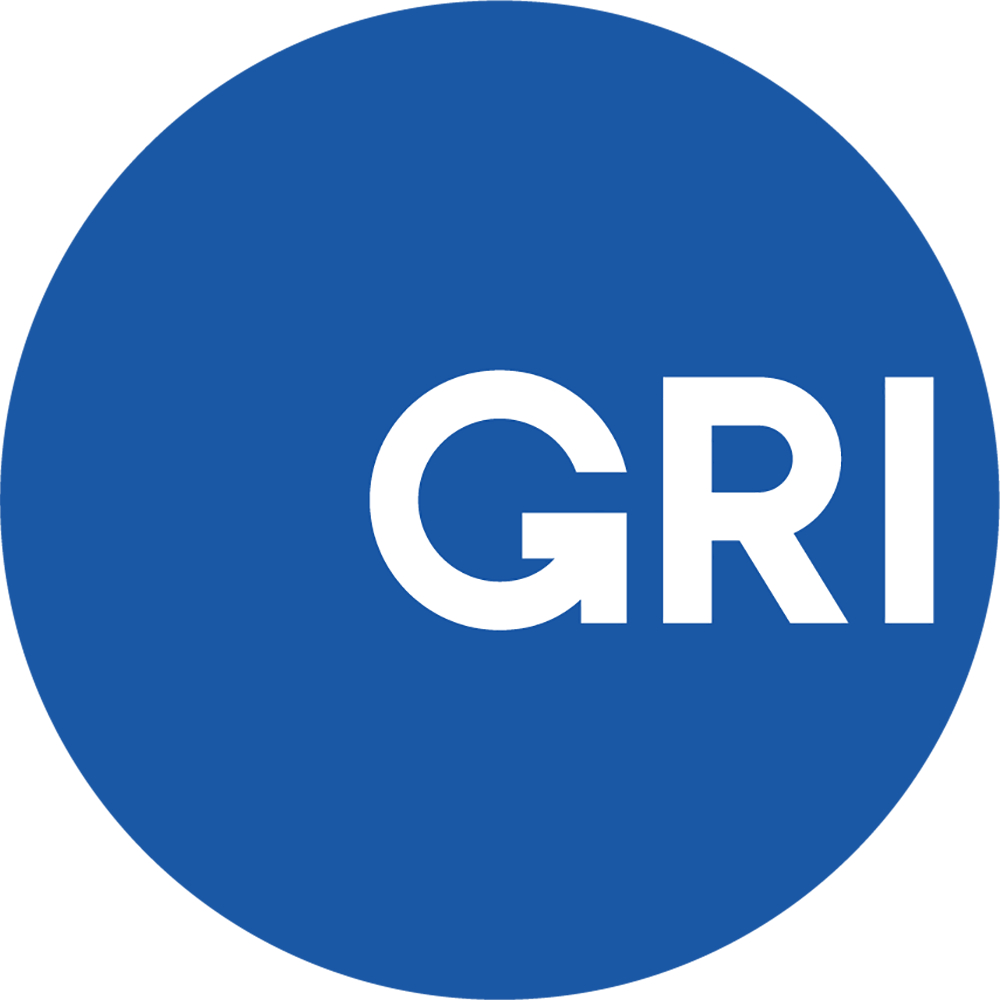Case Study: Sustainability Reporting Helps Direct Focus and Generate Savings
GRI Impact Story: LM Wind Power

For Christopher Springham, Vice President, Global Communications & Sustainability at LM Wind Power, GRI is the go-to organization for sustainability reporting and compliance. A pioneer in G4 reporting and an early adopter of the GRI Standards, LM Wind Power regards sustainability reporting as a motivator and a driver of progress.
Christopher Springham: As a business, LM Wind Power is compelled to examine performance across all our global operations, establish systems to monitor that performance and we provide comparative data to help set priorities within the business functions. The public declaration of our achievements – in the form of sustainability reporting – is a motivator, and we receive valuable input from third parties based on it.
How has LM Wind Power benefited from reporting using the GRI framework and being a member of the GOLD Community?
GRI is the go-to organization for sustainability reporting and compliance standards. We pioneered reporting with the G4 framework, and are now adopting the GRI Standards. GRI GOLD Community membership provides us with an instant network of expertise from GRI, and the chance to connect with peer companies and colleagues driving the challenge of sustainable business forward.
What sustainability topics are material for LM Wind Power and how is the company using reporting to address negative impacts?
Safety, Environment, Technology and People are the four threads of our internal sustainability drive. Reporting brings negative impacts into sharp focus and requires that senior management engage and address negative trends – for example energy use, emissions and waste can all rise as material topics as the business grows – we have to show more action to mitigate these effects. These efforts pay off, too. For example, waste reduction measures at LM Wind Power accumulated to EUR 5.5 million savings in 2016 alone.
LM Wind Power was acquired by General Electric and as a result, will no longer be doing its own financial reporting. However, you plan to continue sustainability reporting separate from GE’s. Why have you made this decision?
LM Wind Power has had its own sustainability program and reporting since 2010, and now we are committed to one of the most ambitious targets in the industry to go carbon neutral in 2018. We see sustainability reporting as a great opportunity to showcase LM Wind Power’s progress and contribution to a cleaner world and have decided to continue to highlight that as it is so closely linked to our brand and vision. Our sustainability objectives merit focus in their own right as we invite our stakeholders such as suppliers and customers to think with us on our sustainability challenges. Our sustainability report is one of our main methods for motivating and informing the partners we work with on our sustainability initiatives.
LM Wind Power has made an ambitious pledge to go carbon neutral by 2018. How are the plans proceeding and how is reporting using the GRI Standards helping with this effort?
Our ambition is declared publicly to become carbon neutral by 2018. The first step is to reduce energy use on a measured basis (per ton or blade produced, for example). Second, we will supply all our plants with renewable energy or offset the supply – including using wind turbines at facilities where feasible. The third step would be to buy offsets, but we aim to limit the amount of emissions to the absolute minimum in 2017. This drive compels us to examine our performance at an unprecedented level of detail, which thereby allows us to report even more robustly and we will continue to use the GRI framework to ensure consistency with previous external reporting.
How has sustainability reporting evolved over time at LM Wind Power?
When we first met with GRI, presenting our first sustainability report, we were very anxious about our performance. It was all new. We soon realized that with GRI, we had friendly critics – allies – an external panel of experts that could guide and inform us. They were quite clear that as our products are mitigating thousands of tons of CO2 annually, we need not be so hard on ourselves. At the same time, we were encouraged to challenge ourselves more and become more ambitious.
My network of former and present GRI people has grown continuously throughout the years, reflecting the challenges of running an organization full of bright, ambitious people. It also reflects the constant change and improvements in the sector. I believe that GRI has become one of the most important incubators for sustainability talent and helped to professionalize the whole sector. As a matter of fact, we have just hired a former GRI colleague to help us drive our reporting further still.
With the GRI Sustainability Reporting Standards, companies are able to unlock the transformative power of transparency, while contributing to the common sustainability agenda and reaping the benefits of increased stakeholder trust. Visit the GRI 20th Anniversary hub for more impact stories, and join the effort to create a sustainable global economy.

